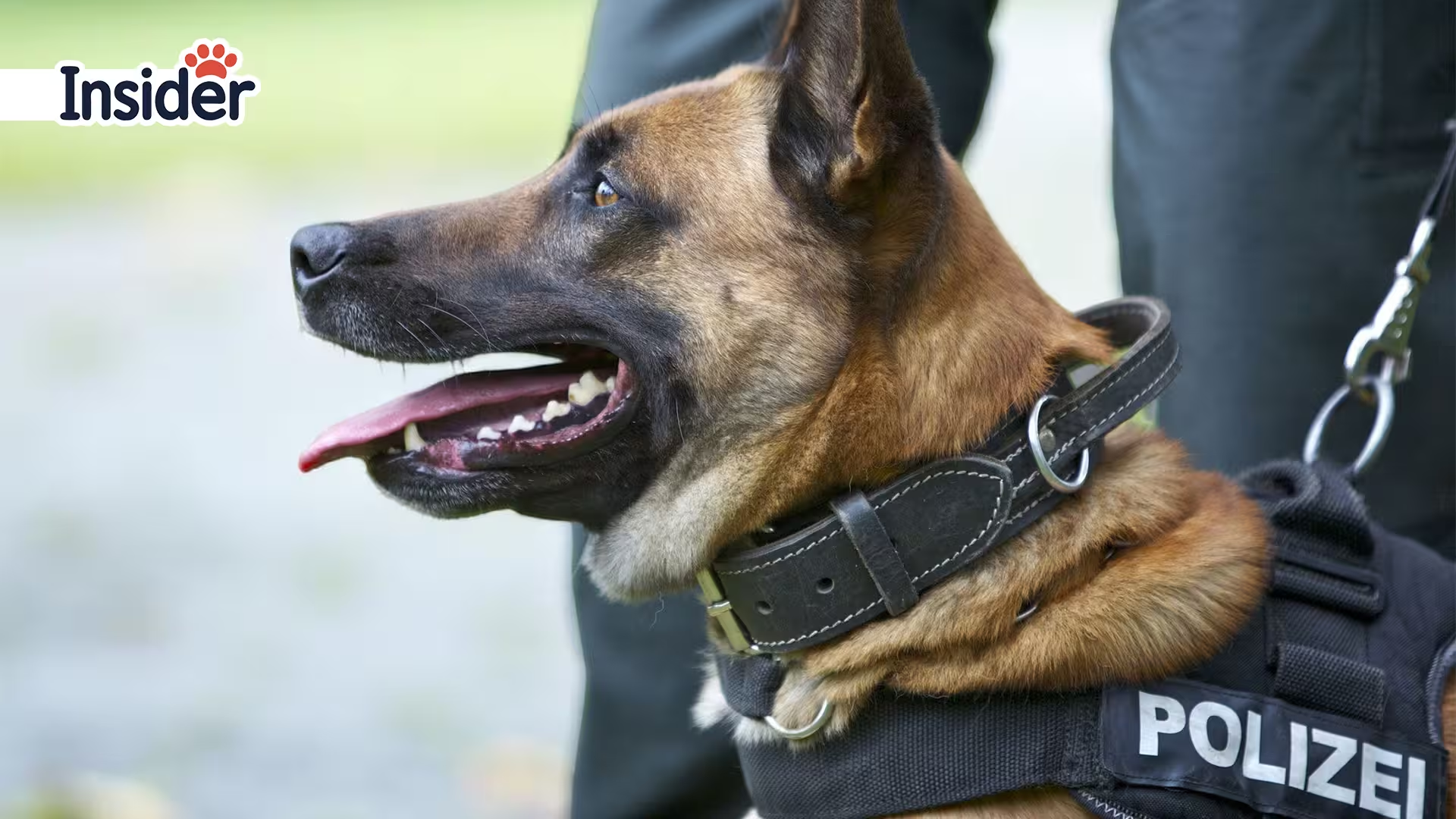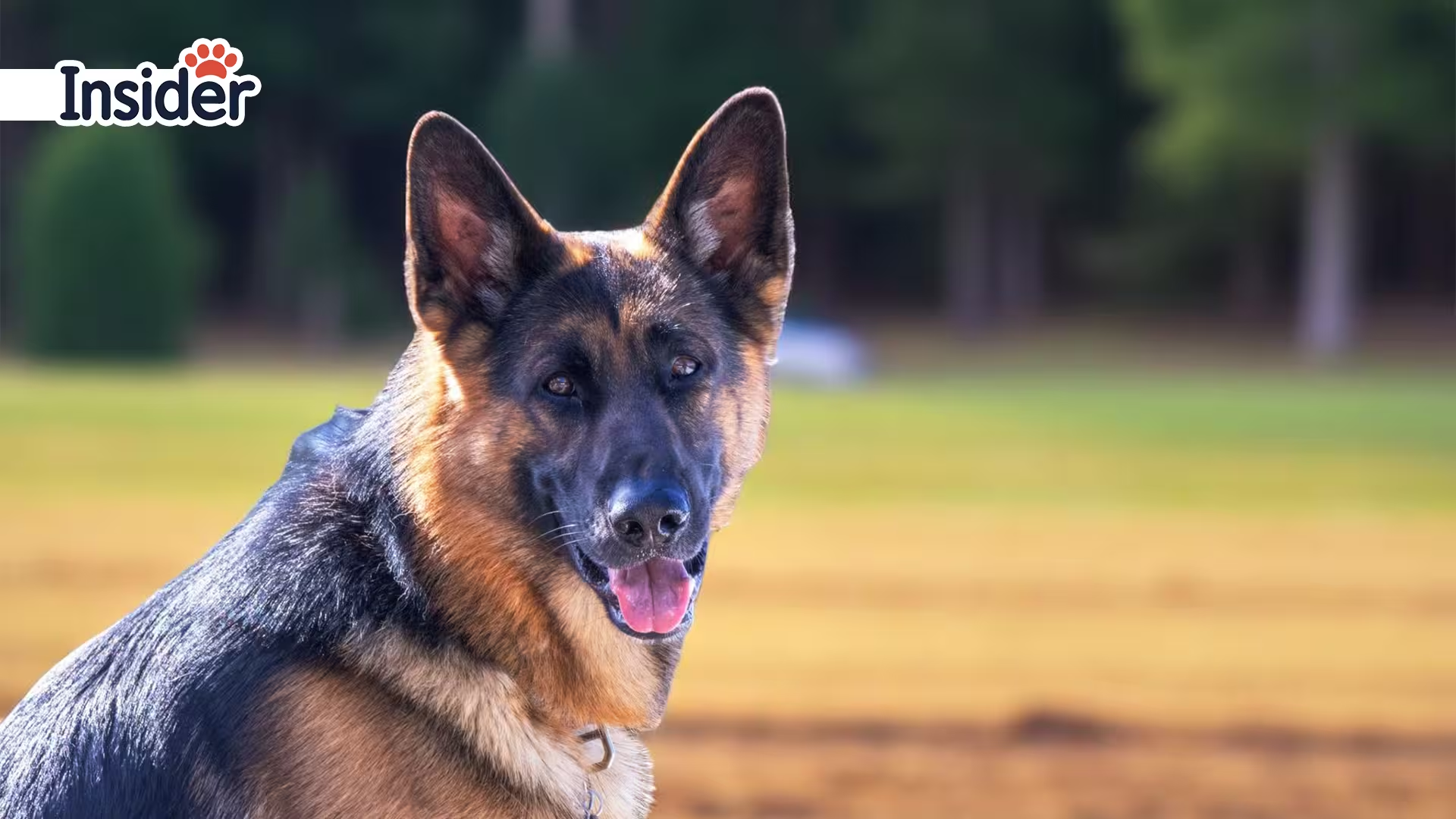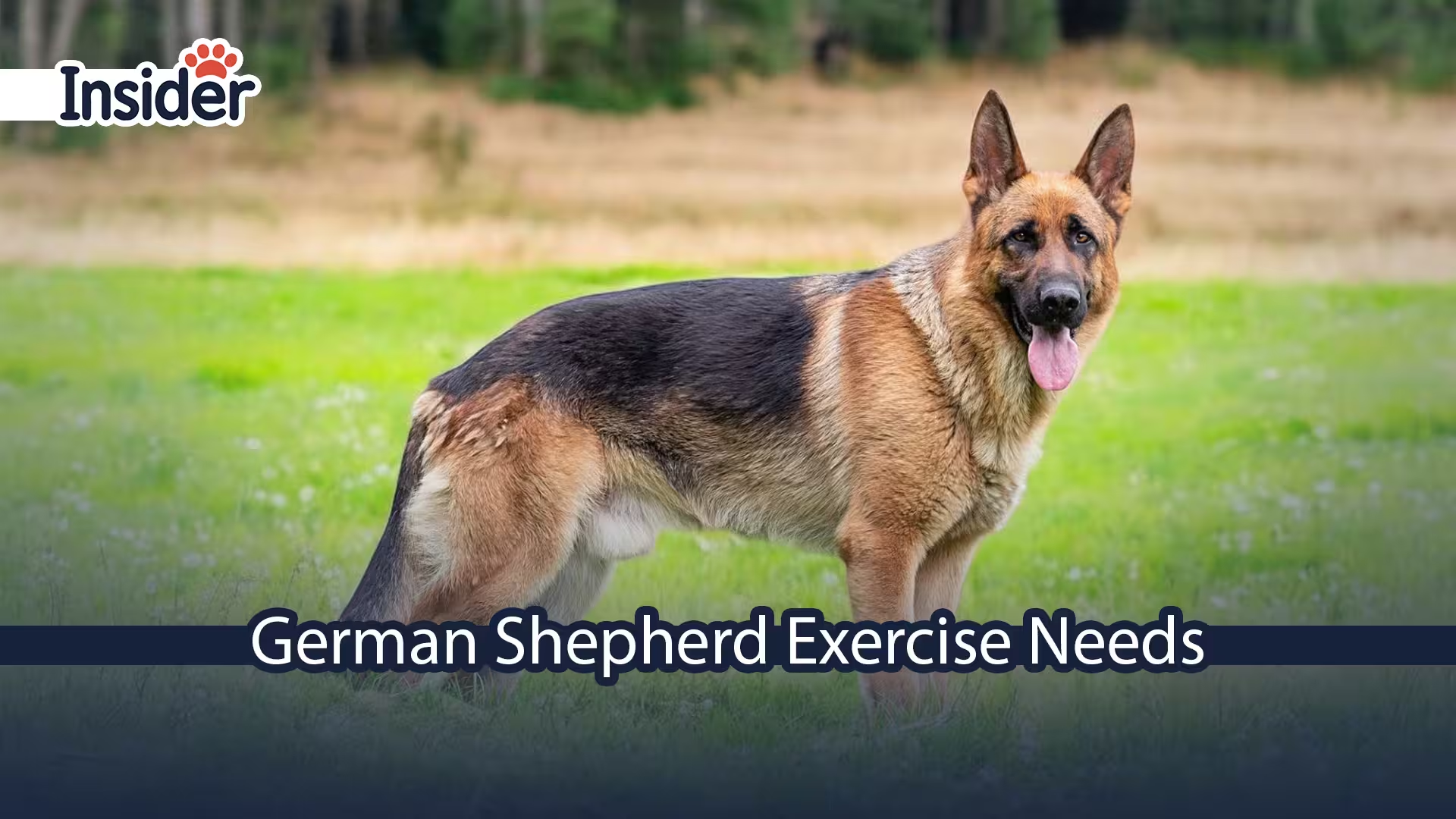German Shepherds are among the most athletic, intelligent, and energetic dog breeds in the world. Originally bred as working dogs in Germany in 1899, these magnificent canines possess an inherent drive that demands proper physical and mental stimulation. Understanding German Shepherd exercise needs isn’t just about keeping your dog physically fit; it’s about maintaining their psychological well-being, preventing behavioral problems, and ensuring they live their best life as your loyal companion.
Whether you’re a new German Shepherd owner or looking to optimize your current exercise routine, this comprehensive guide will equip you with everything you need to know about meeting your dog’s activity requirements. From daily exercise minimums to advanced training techniques, we’ll explore every aspect of keeping your German Shepherd properly exercised and mentally stimulated.
A concise guide to meeting your German Shepherd’s physical and mental exercise needs for optimal health and happiness.
| Age Group | Activities | Daily Duration | Key Tips |
|---|---|---|---|
| Puppy (8 weeks–18 months) | Short walks, free play, basic training, socialization | 5 min/month of age, 2x/day (e.g., 15 min for 12 weeks) Play: 10–15 min | Avoid high-impact activities. Prioritize socialization and rest. |
| Adult (18 months–7 years) | Brisk walks/hiking, running, fetch, advanced training, puzzle toys | 90–120 min (2–3 sessions) Walks: 45–60 min Training/Play: 15–30 min | Vary activities to prevent boredom. Monitor for overexertion. |
| Senior (7+ years) | Gentle walks, swimming, light training, puzzle toys | 60–90 min (3–4 short sessions) Walks: 15–20 min Training: 10–15 min | Reduce intensity. Use swimming for joint health. |
Table of Contents
Understanding the German Shepherd’s Athletic Heritage
German Shepherds were originally developed by Captain Max von Stephanitz as the ultimate working dog. These dogs were bred to herd sheep across vast German countryside for hours at a time, requiring exceptional stamina, intelligence, and physical capability. This working heritage means that modern German Shepherds retain these high-energy characteristics, making them unsuitable for sedentary lifestyles.
The breed’s natural instincts include herding, guarding, and problem-solving, all activities that require significant physical and mental engagement. When these needs aren’t met, German Shepherds often develop destructive behaviors, anxiety, and health problems. Understanding this foundation helps explain why German Shepherd exercise needs are so substantial compared to other breeds.
Today’s German Shepherds continue to excel in demanding roles such as police work, military service, search and rescue, and service dog duties. This working capacity translates directly to their exercise requirements as family pets, making them ideal companions for active individuals and families who can match their energy levels.

Daily Exercise Requirements: The Foundation of Health
German Shepherd exercise needs center around a minimum of two hours of physical activity daily, but this baseline only tells part of the story. The quality, variety, and intensity of exercise matter just as much as duration. Adult German Shepherds typically require between 90 and 120 minutes of vigorous exercise, combined with additional mental stimulation activities throughout the day.
This exercise requirement should be split into multiple sessions rather than one marathon workout. A typical day might include a 45-60 minute morning walk or jog, followed by 30-45 minutes of active play or training in the evening, with shorter bathroom breaks and brief play sessions interspersed throughout the day.
Young German Shepherds under 18 months have different exercise needs due to their developing joints and growth plates. Puppies aged 8-16 weeks should receive about 5 minutes of exercise per month of age, twice daily. For example, a 12-week-old puppy should get approximately 15 minutes of structured exercise twice daily, plus free play time in a secure area.
The “weekend warrior” approach, where dogs get minimal exercise during the week but excessive activity on weekends, can be harmful to German Shepherds. These dogs thrive on consistency and regular activity patterns. Sporadic intense exercise followed by long periods of inactivity can lead to injuries and doesn’t meet their psychological need for routine stimulation.
Physical Exercise Activities: Building the Perfect Routine
Creating an effective exercise routine for your German Shepherd requires understanding different types of physical activities and how they benefit your dog. The most successful exercise programs incorporate cardiovascular training, strength building, agility work, and endurance activities.
Walking and Hiking Daily walks form the foundation of German Shepherd exercise routines, but simple neighborhood strolls rarely provide sufficient stimulation. These dogs excel on challenging hikes with varied terrain, elevation changes, and natural obstacles. Trail hiking engages their problem-solving abilities while providing excellent cardiovascular exercise. Start with shorter distances and gradually build up to longer adventures as your dog’s fitness improves.
For urban environments, brisk walking at a pace that requires your German Shepherd to work slightly, not just amble, provides better exercise value. Incorporating hills, stairs, and varied surfaces during walks increases the physical challenge and prevents boredom.
Running and Jogging, German Shepherds make excellent running companions once they reach physical maturity around 18-24 months. These dogs can easily handle 3-5 mile runs and often prefer faster paces that challenge their cardiovascular system. When starting a running program, begin with short distances and pay careful attention to your dog’s breathing, gait, and energy levels.
Hot weather running requires special precautions due to German Shepherds’ thick double coat. Early morning or evening runs work best, with plenty of water breaks and attention to signs of overheating. Always check paw pads for heat damage when running on pavement during warmer months.
Swimming provides exceptional low-impact exercise that’s particularly beneficial for German Shepherds with joint concerns or those recovering from injuries. This full-body workout builds cardiovascular endurance while being gentle on developing or aging joints. Many German Shepherds initially hesitate around water, but with patient introduction, most learn to enjoy swimming.
Lake swimming, beach activities, and even kiddie pool play can provide valuable exercise and cooling relief during hot weather. Always supervise water activities and consider a dog life jacket for safety, especially when introducing your German Shepherd to swimming.
Fetch and Retrieval Games High-intensity fetch games tap into German Shepherds’ natural retrieval instincts while providing excellent cardiovascular exercise. Use tennis balls, frisbees, or specialized dog toys that encourage running and jumping. Vary the throwing distance and direction to keep your dog mentally engaged while building different muscle groups.
Consider using multiple balls or toys to maintain continuous action throw the second ball before your dog returns with the first to maximize exercise efficiency. This technique prevents the natural pause that occurs during traditional fetch and maintains your dog’s heart rate in the optimal exercise zone.

Mental Stimulation: Exercising the German Shepherd Mind
German Shepherd exercise needs extend far beyond physical activity. These intelligent dogs require substantial mental stimulation to prevent boredom, anxiety, and destructive behaviors. Mental exercises can be as tiring as physical activity and should comprise a significant portion of your dog’s daily routine.
Training Sessions as Mental Exercise Regular training sessions serve dual purposes: building obedience and providing mental stimulation. German Shepherds thrive when learning new commands, tricks, and complex behaviors. Dedicate 15-20 minutes daily to focused training sessions that challenge your dog’s problem-solving abilities.
Advanced training concepts like scent work, tracking, and protection training tap into breed-specific instincts while providing intense mental engagement. Even basic obedience training becomes mentally stimulating when you increase complexity, add distractions, or teach behavior chains that require your dog to remember and execute multiple commands in sequence.
Puzzle Toys and Interactive Feeders: Food-dispensing toys and puzzle feeders transform mealtime into mental exercise opportunities. These tools require dogs to work for their food, engaging problem-solving skills while slowing their eating pace. Rotate different puzzle toys to maintain novelty and prevent your German Shepherd from becoming too efficient at any single puzzle.
Interactive toys that dispense treats when manipulated correctly provide ongoing mental stimulation throughout the day. Hide these toys around your home or yard to encourage natural foraging behaviors while keeping your dog mentally engaged during alone time.
Scent Work and Nose Games: German Shepherds possess exceptional scenting abilities that can be channeled into structured nose work activities. Hide treats around your home or yard and encourage your dog to “find it” using their nose rather than their eyes. Start with easy hiding places and gradually increase difficulty as your dog masters the game.
Formal scent work training, where dogs learn to identify and alert to specific odors, provides intensive mental stimulation while building confidence and focus. Many communities offer beginner scent work classes specifically designed for pet dogs rather than working dogs.
Age-Specific Exercise Guidelines: From Puppy to Senior
German Shepherd exercise needs change significantly throughout their lifetime, requiring adjustments to activity type, intensity, and duration as dogs age. Understanding these changes helps prevent injury while ensuring appropriate stimulation at every life stage.
Puppy Exercise Guidelines (8 weeks to 18 months) Growing German Shepherd puppies have unique exercise requirements that balance their high energy with the need to protect developing joints and growth plates. The general rule of five minutes per month of age, twice daily, provides a starting framework, but individual puppies may need modifications based on their energy levels and physical development.
Puppy exercise should emphasize free play rather than forced exercise like long walks or runs. Allow puppies to self-regulate their activity levels during play sessions, as they naturally take breaks when tired. Focus on short bursts of activity followed by rest periods, mirroring natural puppy behavior patterns.
Socialization activities provide excellent exercise for young German Shepherds while building crucial social skills. Puppy classes, supervised play dates, and controlled interactions with other dogs offer physical activity combined with mental stimulation and social development.
Avoid high-impact activities like jumping, long-distance running, or repetitive activities that stress developing joints. Swimming, gentle hiking on soft surfaces, and varied play activities provide safer exercise options for growing puppies.
Adult Exercise Programs (18 months to 7 years) Adult German Shepherds in their prime require the most intensive exercise programs, as they possess full physical capability combined with peak energy levels. This life stage allows for the most demanding activities, including long-distance hiking, running, agility training, and sport participation.
Establish consistent daily routines that provide both physical and mental challenges. Adult German Shepherds can handle more intense training sessions, complex problem solving activities, and extended outdoor adventures. This is the ideal time to explore dog sports, advanced training, and specialized activities that tap into breed specific abilities.
Monitor your dog’s fitness level and gradually increase activity intensity and duration. Well-conditioned adult German Shepherds can participate in activities like bikejoring, skijoring, and competitive dog sports that provide exceptional physical challenges.
Senior Exercise Adaptations (7+ years) Senior German Shepherds require modified exercise programs that maintain fitness while accommodating age-related changes like arthritis, reduced stamina, and slower recovery times. The goal shifts from high-intensity training to maintaining mobility, muscle mass, and mental engagement.
Reduce exercise intensity while maintaining frequency. Multiple shorter walks often work better than single long outings for senior dogs. Swimming becomes particularly valuable as a low-impact exercise that maintains cardiovascular fitness without stressing aging joints.
Continue mental stimulation activities, as cognitive function remains important for senior dogs. Gentle training sessions, puzzle toys, and scent work provide mental engagement without physical stress. Watch for signs of fatigue, stiffness, or discomfort and adjust activities accordingly.

Exercise Safety and Injury Prevention
German Shepherd exercise programs must prioritize safety to prevent injuries that could sideline your dog for weeks or months. Understanding common injury risks and prevention strategies ensures your dog can maintain an active lifestyle throughout their life.
Weather Considerations: German Shepherds’ thick double coat makes them susceptible to overheating during hot weather exercise. Schedule activities during cooler parts of the day, provide frequent water access, and watch for signs of heat exhaustion, including excessive panting, drooling, or lethargy.
Cold-weather exercise requires different precautions. While German Shepherds tolerate cold better than heat, extended exposure to freezing temperatures, ice, and snow can cause paw pad injuries or hypothermia. Consider protective booties for extended winter activities and provide warm shelter after outdoor exercise.
Surface and Terrain Safety: Vary exercise surfaces to build different muscle groups while preventing overuse injuries. Hard surfaces like concrete stress joints differently than soft surfaces like grass or dirt trails. Gradually introduce new terrains and monitor your dog’s response to different surface types.
Check exercise areas for hazards like broken glass, sharp rocks, toxic plants, or other dogs’ waste before allowing off-leash activity. Many injuries occur when dogs step on hidden dangers during enthusiastic play or exercise.
Recognizing Overexertion Learn to recognize signs that your German Shepherd is becoming overexerted during exercise. Early warning signs include excessive panting that doesn’t resolve quickly during rest breaks, stumbling or coordination problems, or reluctance to continue activities they normally enjoy.
More serious signs requiring immediate attention include pale gums, excessive drooling, vomiting, or collapse. German Shepherds often push themselves beyond safe limits due to their strong work ethic, making owner awareness crucial for preventing dangerous overexertion.
Creating Exercise Schedules That Work
Successful German Shepherd exercise programs require realistic scheduling that fits your lifestyle while meeting your dog’s needs. The most elaborate exercise plan fails if it’s too complex or time-consuming to maintain consistently.
Daily Schedule Framework: Structure your day around two major exercise sessions with smaller activity breaks throughout. A typical schedule might include a 45-60 minute morning walk or jog, followed by a 30-45 minute evening training or play session. Intersperse shorter activities like bathroom breaks, brief training sessions, or puzzle toy time throughout the day.
Weekend schedules can include longer adventures like hiking, beach visits, or extended training sessions, but avoid the trap of weekend-only intensive exercise. German Shepherds need consistent daily activity to maintain physical and mental health.
Adapting to Life Changes: Life circumstances change, and your exercise routine must adapt accordingly. Job changes, injuries, weather patterns, and family situations all impact available exercise time. Develop backup plans for high-intensity indoor activities, shorter but more frequent exercise sessions, or alternative activities that provide similar benefits with different time or location requirements.
Consider enlisting help from dog walkers, doggy daycare, or family members during busy periods. German Shepherds adapt well to different exercise providers as long as their activity needs continue to be met consistently.
Tracking Progress and Adjustments: Monitor your German Shepherd’s response to different exercise routines and adjust accordingly. Signs of a well-exercised German Shepherd include calm behavior in the house, good appetite, healthy sleep patterns, and enthusiasm for exercise activities.
Under-exercised dogs often display destructive behaviors, excessive barking, restlessness, or attention-seeking behaviors. Over-exercised dogs may show reluctance to participate in activities, excessive fatigue, or physical signs like limping or stiffness.

Conclusion: Building a Lifetime of Healthy Activity
Meeting German Shepherd exercise needs requires commitment, creativity, and consistency, but the rewards of a well exercised dog are immeasurable. These magnificent dogs offer unparalleled loyalty, intelligence, and companionship when their physical and mental needs are properly addressed.
Remember that German Shepherd exercise needs are not just about physical activity; they encompass mental stimulation, social interaction, and purposeful engagement that honors their working heritage. The time and energy you invest in proper exercise will be returned many times over through your dog’s improved behavior, health, and deep bond with your family.
Start with realistic goals based on your dog’s current fitness level and gradually build toward more challenging activities. Consistency matters more than perfection, and even modest improvements in exercise quality and quantity will yield noticeable benefits in your German Shepherd’s overall well-being.
Your German Shepherd depends on you to provide the activity and stimulation they need to thrive. By understanding and meeting these exercise requirements, you’re ensuring your loyal companion lives their happiest, healthiest, and most fulfilling life possible.
FAQ
How much exercise does a German Shepherd need daily?
Adult German Shepherds require a minimum of 2 hours of physical activity daily, including 90-120 minutes of vigorous exercise split into multiple sessions. This should include walking, running, or hiking combined with mental stimulation activities.
Can German Shepherd puppies go on long walks?
No, puppies under 18 months should follow the “5 minutes per month of age, twice daily” rule. A 12-week-old puppy needs only 15 minutes of structured exercise twice daily, plus free play time to protect developing joints.
What happens if my German Shepherd doesn’t get enough exercise?
Under-exercised German Shepherds often develop destructive behaviors, excessive barking, anxiety, restlessness, and attention-seeking behaviors. They may also experience weight gain and related health problems.
Are German Shepherds good running companions?
Yes, German Shepherds make excellent running partners once they reach 18-24 months old. They can handle 3-5 mile runs but should start gradually. Avoid running in hot weather due to their thick coat.
What’s the best mental exercise for German Shepherds?
Training sessions, puzzle toys, scent work, and nose games provide excellent mental stimulation. These intelligent dogs need 15-20 minutes of focused mental exercise daily, which can be as tiring as physical activity.

